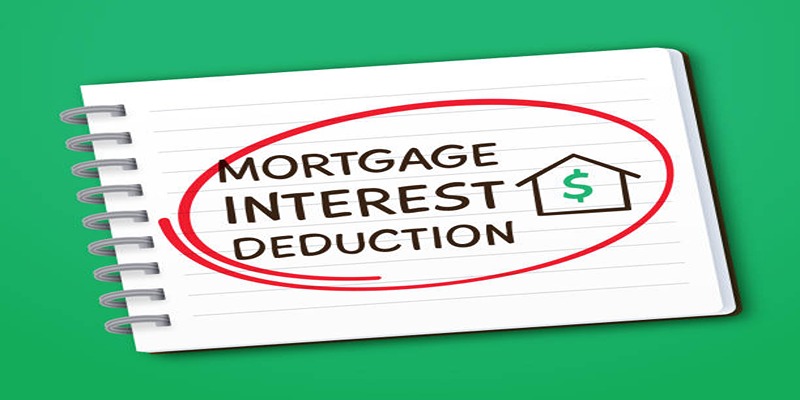Buying a home is a major milestone, but it also comes with costs. Thankfully, homeowners in the U.S. can take advantage of the Home Mortgage Interest Deduction, one of the most valuable tax benefits available. Understanding this deduction can help you save significantly during tax season. This blog will explain how it works and guide you through the process of claiming it.
What is Home Mortgage Interest Deduction?

Home mortgage interest deduction is a tax incentive that allows homeowners to subtract the interest they pay on their mortgage as a way of lowering their taxable earnings. This incentive encourages home ownership by giving financial assistance to home owners.
What Can You Deduct?
This deduction is applicable on the interest that you pay on loans taken to purchase, construct or make improvements on your primary or secondary residence. Here’s a quick breakdown of what qualifies:
- Mortgage Loan Interest: This includes loans taken out to purchase or refinance your home.
- Home Equity Loans or Lines of Credit (HELOCs): Interest on these loans may also qualify, but only if the funds are used for home improvements (more on this later).
- Points Paid on the Loan: If you paid points to lower your mortgage interest rate, they might be deductible.
Limits on Deductions
The amount of mortgage interest you can deduct depends on when you took out your mortgage and its principal amount.
- For loans taken out after December 15, 2017: You can deduct mortgage interest on loans up to $750,000 (or $375,000 if married filing separately).
- For loans before December 15, 2017 (grandfathered rules): The limit is $1,000,000 (or $500,000 if married filing separately).
The above limits apply to cumulative loan amounts for your primary and secondary homes.
Benefits of Home Mortgage Interest Deduction
The home mortgage interest deduction provides significant advantages for homeowners. Here’s why it matters:
- Reduces Taxable Income: This means that you can reduce the figure on which tax is charged by deducting mortgage interest. This could lead to significant tax savings, particularly to homeowners with a large mortgage or those falling in the higher tax brackets.
- Makes Homeownership More Affordable: When you include tax deductions, the net cost of home ownership is reduced and hence homeownership becomes more affordable.
- Incentivizes Long-Term Property Ownership: This deduction encourages Americans to invest in long-term assets like homes, which builds equity and stability over time.
- Helps Offset High Housing Costs: For homeowners in areas with pricey real estate markets, the interest deduction can help soften the financial blow of high mortgage payments.
Who Can Claim the Deduction?
Not every taxpayer can benefit from this deduction. To qualify, you must meet these criteria:
You Must Itemize Deductions
The home mortgage interest deduction is only available to taxpayers who itemize their deductions instead of taking the standard deduction. Itemizing is usually worthwhile if your total deductions (including mortgage interest) exceed the standard deduction.
Standard deduction amounts for the 2023 tax year are as follows:
- $13,850 for single filers
- $20,800 for head of household
- $27,700 for married couples filing jointly
You Must Be Legally Obligated to Pay the Loan
The mortgage must be in your name or your spouse’s name.
Your Home Must Be a Qualified Property
Only interest on a primary residence or secondary residence qualifies. Vacation homes fall under the secondary residence category, but you can’t deduct interest on rentals unless you also use the home personally.
How to Claim the Mortgage Interest Deduction
Claiming the home mortgage interest deduction is relatively straightforward. Follow these steps to ensure you maximize your tax savings:
1. Itemize Instead of Taking the Standard Deduction
To begin, determine whether itemizing your deductions will save you more money compared to the standard deduction. If your total deductions—including mortgage interest, property taxes, and other expenses—outweigh the standard deduction, it’s worth itemizing.
2. Get Your Form 1098
Your mortgage lender will send you Form 1098, which details how much interest you paid during the year. Keep this handy when preparing your taxes.
3. Fill Out Schedule A
When you file your taxes, use Schedule A to itemize your deductions. Enter the mortgage interest amount reported on Form 1098.
4. Include Home Equity Loan Interest if Eligible
If you used a home equity loan or HELOC for home improvements, remember to include the interest paid. Ensure the funds were spent on renovations that add to the home’s value to qualify.
5. Work with a Tax Professional if Needed
If your mortgage involves complex circumstances, consult a tax professional. They’ll ensure you maximize your deductions and comply with all IRS regulations.
Common Mistakes to Avoid

While the deduction offers excellent benefits, it’s crucial to avoid these common errors when claiming it:
- Misreporting Loan Amounts: Remember that deductions are capped at $750,000 or $1,000,000, depending on when your loan originated. Report accurate figures to avoid IRS scrutiny.
- Misinterpretation of Home Equity Loan Rules: Make sure to only claim interest on home equity loans used for qualified improvements. Using a HELOC for personal expenses (e.g., a vacation or car purchase) doesn’t qualify.
- Forgetting to File Form 1098: Always check that your Form 1098 matches the figures you report on your return.
Is the Mortgage Interest Deduction Right for You?
While this deduction is incredibly valuable, it’s not always beneficial for every homeowner. If your total deductions don’t exceed the standard deduction, itemizing might not make sense for you.
Additionally, tax laws change periodically, so staying informed about updates to mortgage interest deduction rules is crucial.
Conclusion
Owning a home is a rewarding experience, and the home mortgage interest deduction makes it even sweeter. By understanding how this deduction works and claiming it properly, you can significantly reduce your tax burden and reinvest those savings into other priorities. If you’d like to calculate how much you can deduct or need assistance with tax planning, consult with a tax professional today. With the right guidance, you can make the most of this valuable homeowner benefit!












